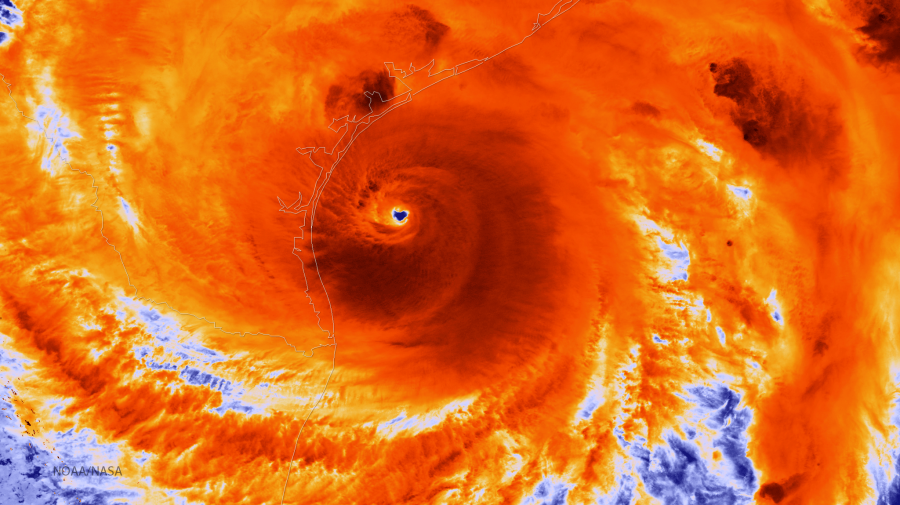Rumors of utility shutdowns and identification checks at evacuation centers began to emerge before Hurricane Harvey had even made landfall in Texas.
City governments and local newsrooms were the first to jump on these hoaxes and posted corrections to social media and their respective websites within hours. By the time the rumor pool had swelled to encompass sightings of sharks and former presidents, reporters at national publications like the Washington Post and The New York Times had begun to aggregate the various hoaxes.
Disaster-time debunks have come a long way compared to five years ago when the hoaxes of Hurricane Sandy were being debunked in real-time by a core group of Twitter users led by Alexis Madrigal, who was then at the Atlantic, and Tom Phillips, who was editing the ‘Is Twitter wrong?’ blog. There’s much to commend about the Harvey hoax coverage, like the Houston Chronicle‘s expeditious debunks and Snopes‘ long list of fact-checks. After all, while some of the hoaxes may have seemed ridiculous, others were patently dangerous. Take, for example, the claim that evacuation centers would require shelter seekers, including undocumented immigrants, to show identification. Or consider reports that Black Lives Matter protesters were blocking emergency vehicles.
A hyperpartisan conservative site used a photo from 2015 to falsely claim that Black Lives Matter blocked #HurricaneHarvey rescue efforts pic.twitter.com/VgbbgdeZwE
— Craig Silverman (@CraigSilverman) August 31, 2017
But, as is always true with hindsight, some aspects of the media’s coverage could have been better. Here are a few recommendations to consider so that we can better prepare for the next disaster.
As remains true with image-based hoaxes, some reporters and producers were fooled. Fox News’ Jesse Watters took a lot of heat for repeating the falsehood that sharks were swimming around Houston’s flooded highways. Katie Couric shared a photo of an alligator she believed was taken by a friend in her yard. There’s no great excuse for these blunders: a simple reverse image search of this image would have quickly revealed these photos had been shared before.
First Draft video tutorial on Google reverse image search and TinEye
Many of the misleading images shared in Harvey’s aftermath were not new. Still more of the hoaxes that emerged could have been easily predicted, as was suggested by several reporters. The foreseeable nature of these hoaxes means that proactive measures need to be taken to:
- Inoculate residents to hoaxes they were likely to encounter
- Prepare to flag and debunk these hoaxes in real time
The how-tos could have been published well before Friday night, thus ensuring that residents had a chance to see them before any hoaxes started trending. One can easily imagine how the lists of posts “you shouldn’t fall for” could have been supplemented with earlier stories providing examples of what exactly residents should watch out for. What is desperately needed is a tagged database of images taken and shared during past natural disasters, so that these images can be identified automatically (e.g., with perceptual hashing) when they are inevitably shared again.
As for dealing with novel hoaxes, our election newsrooms monitoring misinformation during the French, UK and German campaigns could be effective models for thinking about misinformation during natural disasters. These newsrooms could be made up of a waiting group of volunteers, already trained in fact-checking and/or visual verification. Or, if news organizations could find a way to coordinate with one another ahead of such events, we could avoid duplicating efforts. For example, the similarities between roundup hoax coverage from different newsrooms were noticeable.
Such efforts are demonstrably possible. The Harvey Relief and Harvey Rescue projects show how groups of tech-savvy volunteers can come together in a matter of hours to make a tangible difference. Better yet, Standby Task Force demonstrates that such groups don’t have to be formed on the fly, volunteers could coordinate and prepare beforehand, as the Task Force has done for years.
Involvement from Facebook and Twitter would make such collaborations infinitely more effective. For starters, it would mean more posts and images could be checked—ideally in a semi-automatic fashion. It could also mean greater reach for debunks. The limited engagement of corrections continues to remind us that without involvement from the platforms, traffic on debunks will likely never approach that of the hoaxes.
However we think about building these partnerships, though, we need to make sure they are international. While Harvey engulfed our attention in the West, more than 1,000 people have died in floods in India, Nepal and Bangladesh.
We’ve gotten far better at covering disaster-time hoaxes, but clearly there’s still much more that can be done. And, when lives are potentially at stake, there’s no such thing as being hypercritical. Every small improvement counts. Let’s begin preparing for the next natural disaster now, because it’s likely closer than we think.
Note: Watching Hurricane Irma’s approach, First Draft opened a private Slack channel to allow journalists and platform representatives from our partner organizations to easily share their verification findings . We were struck at how simply opening a communication channel between these parties led to a productive collaboration. In light of this experience, we reaffirm the value of establishing similar, longstanding collaborations that can be readily activated during breaking-news events—meteorological or otherwise.
Separately, if you’re interested in hoax coverage of Hurricane Irma, you can find good examples in The Washington Post and Buzzfeed.



